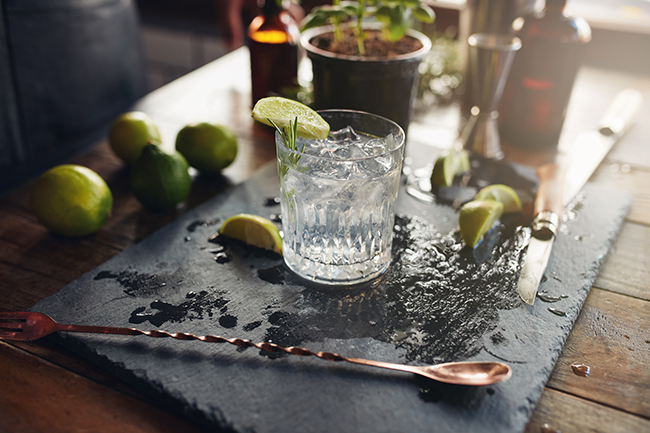
Have we reached the peak point for Scottish gin?
Most people don’t realise that a gin named after a specific location doesn’t necessarily mean it is from that location.
I have hosted panel discussions entitled The Great Gin Debate, one at Juniper Festival in Edinburgh’s Summerhall and the other at the Edinburgh Food Festival.
The panel was made up of Scottish gin industry producers and experts.
The debates were positive and feedback from the members of the public who attended the debates showed once again that they weren’t away of this issue – a gin’s name doesn’t mean it’s distilled there.
Following on from this I’ve also received phone calls from Food Standards Scotland who are waking up to the idea that consumers are potentially being mislead.
In the months following there have been dozens and dozens of new gins appearing on the market and it seems like every man and his dog is now trying to make a gin, whether rectifying or compounding themselves, or more likely made under contract elsewhere in order to get on the gin bandwagon faster.
This leads me to ask the question, have we now reached peak gin?
To me it certainly seems like summer 2017 was when we reached peak gin once and for all. It appears that nearly every town and city in Scotland has a gin named after it, whether or not the gin is actually made there is another question.
A prediction I made in early 2017 was that once every major city has a namesake gin, a la Edinburgh Gin, other brands with more localised names would eventually appear, well in July 2017 Leith Gin was released. How long until we see Morningside Gin or EH1 Gin I wonder? Down south there was even a WimbleGin, which was inevitably going to happen eventually, announced in advance of the Wimbledon Tennis tournament.
Part of this issue of naming gins after somewhere they are not necessarily from leads to producers getting into disputes – that this is really a wild west of gin.
It seems like we have now entered this phase within the Scottish gin scene. Through the grapevine I have heard of cease and desists being sent out left, right and centre by individuals who have taken out trademark applications for brand names that are already being traded.

Scotland is responsible for making the majority of the UK’s gin
On the one hand it is laughable as they clearly don’t understand the basics of intellectual property law but on the other hands it is very upsetting that a few individuals feel the need to do this in what is a very small industry. It is unfortunate but this internal cannibalising will only lead to more confusion for consumers.
When I posed the question ‘Have we reached peak gin?’ to my contacts in the gin world I was surprised that they more or less unanimously agreed that it still had a long way to go.
Alan Wolstenholme, chairman of the Scottish Craft Distillers Association, believes that we are nowhere near peak gin yet, and that there is a long way to go. Stephen White of the Scottish Gin Society agrees but thinks it all depends on the continuation of the premiumisation of gin. He says that ‘If the price point of our premium and craft gins drops suddenly, it would decimate the business models of a lot of distilleries – particularly the smaller ones.’
In June 2017 a brand called Ginny McGinFace, yes that’s it real name, was released. If that doesn’t reek of peak gin then I don’t know what does. Perhaps I should have a glass of Unicorn Tears Gin liqueur, yes this exists too, to calm me down a bit.
As well as strange brand names the USPs of gins are also becoming stranger too. For example, the Boutiquey Gin Company recently released a gin called Moon Shot where they had sent every gram of the botanicals used to make the gin into near space, to an altitude of nearly 79,000 feat. Supposedly the lower air pressure did something to the botanicals.
All of this may give be giving me stress wrinkles too, so perhaps a wee CollaGin martini, made with the addition of pure collagen would keep me feeling young.
I strongly hope that the Scottish gin scene can stay positive and work closely together for the greater good of the category.
I am also encouraged that discussions are starting around the idea of creating a Scottish Gin GI (Geographical Indicator). So perhaps my thought that we’d reached peak gin in the summer of 2017 is wrong. Perhaps we do have a long way to go.
TAGS

